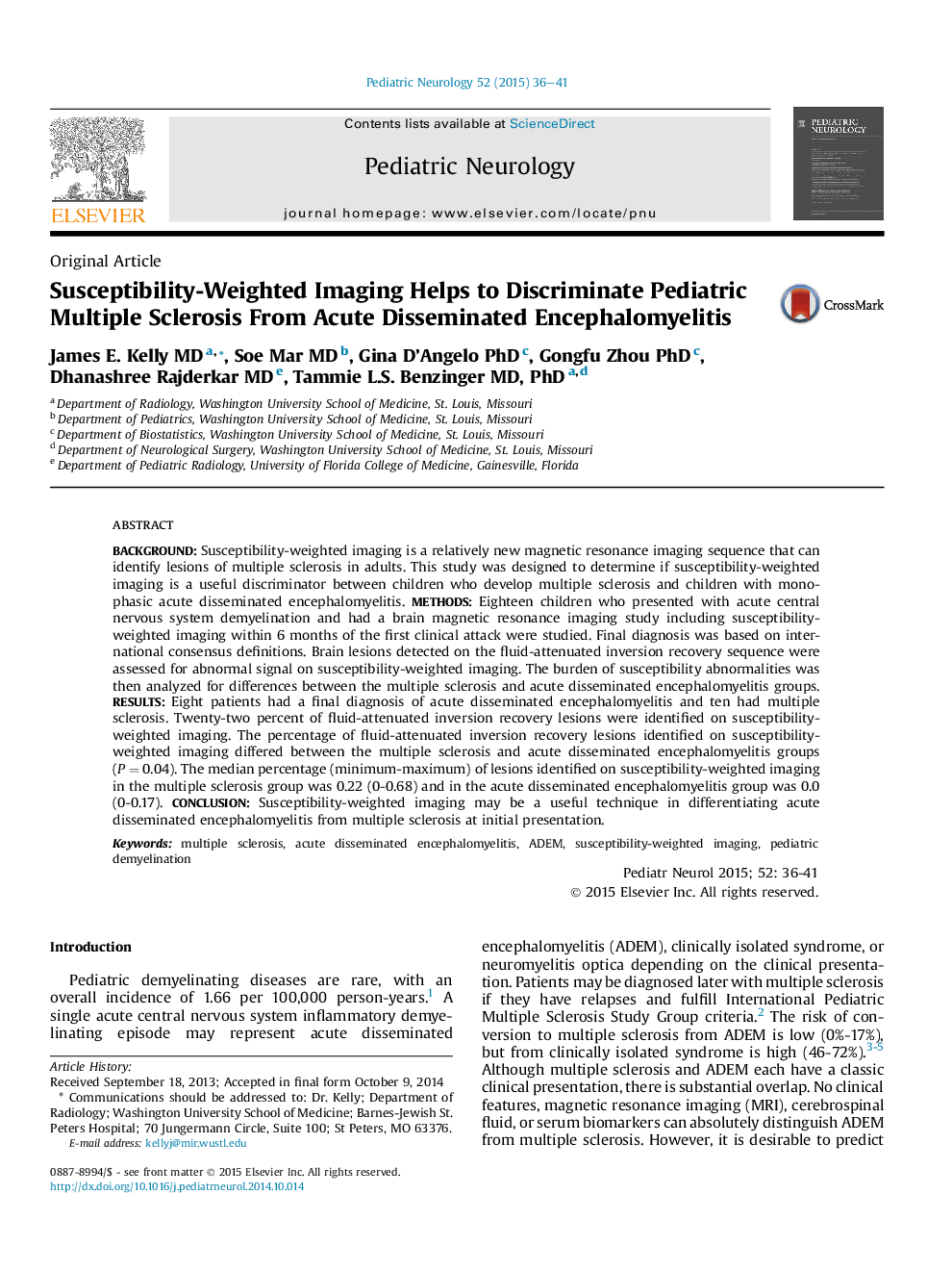| کد مقاله | کد نشریه | سال انتشار | مقاله انگلیسی | نسخه تمام متن |
|---|---|---|---|---|
| 6042153 | 1189779 | 2015 | 6 صفحه PDF | دانلود رایگان |
BackgroundSusceptibility-weighted imaging is a relatively new magnetic resonance imaging sequence that can identify lesions of multiple sclerosis in adults. This study was designed to determine if susceptibility-weighted imaging is a useful discriminator between children who develop multiple sclerosis and children with monophasic acute disseminated encephalomyelitis.MethodsEighteen children who presented with acute central nervous system demyelination and had a brain magnetic resonance imaging study including susceptibility-weighted imaging within 6 months of the first clinical attack were studied. Final diagnosis was based on international consensus definitions. Brain lesions detected on the fluid-attenuated inversion recovery sequence were assessed for abnormal signal on susceptibility-weighted imaging. The burden of susceptibility abnormalities was then analyzed for differences between the multiple sclerosis and acute disseminated encephalomyelitis groups.ResultsEight patients had a final diagnosis of acute disseminated encephalomyelitis and ten had multiple sclerosis. Twenty-two percent of fluid-attenuated inversion recovery lesions were identified on susceptibility-weighted imaging. The percentage of fluid-attenuated inversion recovery lesions identified on susceptibility-weighted imaging differed between the multiple sclerosis and acute disseminated encephalomyelitis groups (PÂ =Â 0.04). The median percentage (minimum-maximum) of lesions identified on susceptibility-weighted imaging in the multiple sclerosis group was 0.22 (0-0.68) and in the acute disseminated encephalomyelitis group was 0.0 (0-0.17).ConclusionSusceptibility-weighted imaging may be a useful technique in differentiating acute disseminated encephalomyelitis from multiple sclerosis at initial presentation.
Journal: Pediatric Neurology - Volume 52, Issue 1, January 2015, Pages 36-41
